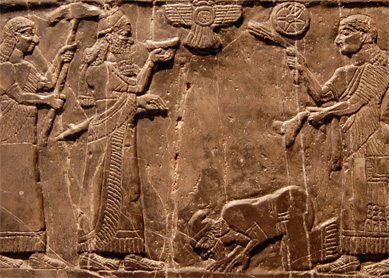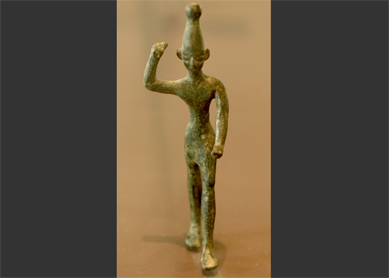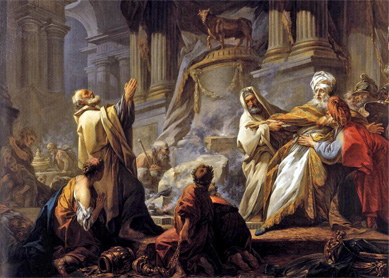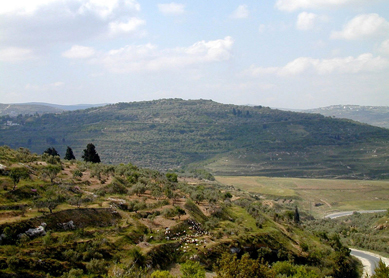The book of Kings recounts a vivid story about Jehu’s rebellion (
Jehu, identified as a high official of the Israelite army, receives a visitor who anoints him “king over Israel” and urges him to eradicate the cult of Baal—a Phoenician god whose worship was introduced to Israel, according to the narrative, by Jezebel, a Phoenician princess, the wife of Ahab and mother of Joram, king of Israel.
Jehu kills Joram with an arrow said to have “pierced to his heart” (
The main contours of this story are thought to reflect a real event that took place in 841 B.C.E. However, though recent research has revealed the historical background behind this event, it has also cast doubt on the historical authenticity of aspects of the biblical account. Contemporary Assyrian inscriptions indicate that Jehu’s coup must be understood against the background of the balance of power in the ancient Near East.
The Assyrian ruler Shalmaneser III (858–824 B.C.E.) led aggressive military campaigns to Syria-Palestine after he ascended to the throne. In 853 B.C.E., in northern Syria, he encountered an opposing military coalition consisting of many small Syro-Palestinian kingdoms. Ahab, Joram’s father, played a major role in this anti-Assyrian alliance, together with the Aramean king Hadadezer of Aram-Damascus. This alliance appears to have disintegrated when another Aramean, Hazael, called the “son of nobody” in an Assyrian text, took the throne of Damascus sometime between 845 and 841 B.C.E.; nevertheless, Hazael maintained the same anti-Assyrian policy.
Hazael went to war against Joram and Ahaziah on the eve of Jehu’s coup at Ramoth-Gilead (
According to a recently discovered Aramaic inscription from Tel Dan, Hazael is the one who killed Joram and Ahaziah. Because he could not form the alliance he needed, Hazael had to confront the Assyrian onslaught alone. It was at this time that Jehu, taking advantage of the political turmoil, usurped the throne of Israel.
Shalmaneser mentions in five of his inscriptions, including the famous Black Obelisk found at his capital Nimrud, that “Jehu, son of Humri [Omri]” was one of his vassal kings who brought him tribute in 841 B.C.E., the year of Jehu’s rebellion.
It seems therefore that Jehu hastened to affirm his loyalty to the Assyrian king soon after his coup d’état, in order to secure Shalmaneser’s support. This means that Jehu, in contrast to Ahab, adopted a pro-Assyrian policy—for the first time in Israel’s history.
Yet Israel could not count on Assyrian protection for long. Shalmaneser failed to subjugate Hazael. After the Assyrians withdrew from Syria-Palestine, Hazael took control of the entire region and invaded Israel. Hazael’s conquest of Israel’s northern cities is confirmed by recent radiocarbon dating of the destruction layers of these sites. Looking back on these events, it becomes clear that Jehu’s rebellion eventually brought disastrous repercussions for the kingdom of Israel, which could not recover from Aramean oppression until the reign of Jehu’s grandson Jehoash.




